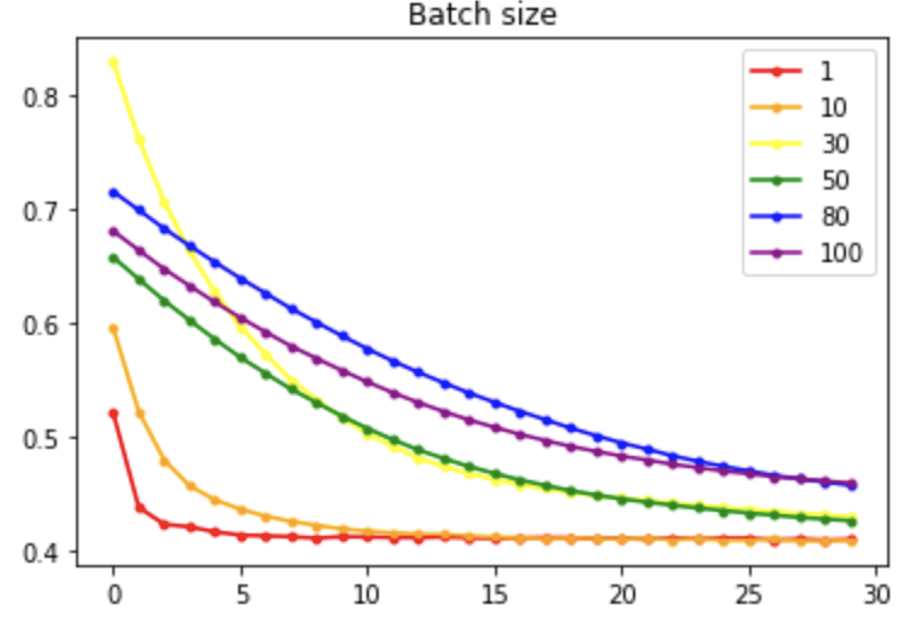고급 경사 하강법 성능 비교
코드
# 파일 선택을 통해 예제 데이터를 내 컴퓨터에서 불러옵니다.
# 딥러닝을 구동하는 데 필요한 케라스 함수를 불러옵니다.
from tensorflow.keras.models import Sequential
from tensorflow.keras.layers import Dense
# 필요한 라이브러리를 불러옵니다.
import numpy as np
import tensorflow as tf
import matplotlib.pyplot as plt
# 실행할 때마다 같은 결과를 출력하기 위해 설정하는 부분입니다.
np.random.seed(3)
tf.random.set_seed(3)
# 불러온 데이터를 적용합니다.
Data_set = np.loadtxt("./dataset/ThoraricSurgery.csv", delimiter=",")
# 환자의 기록과 수술 결과를 X와 Y로 구분하여 저장합니다.
#X = Data_set[:,0:17]
X = Data_set[:,7:10]
Y = Data_set[:,17]
print(Data_set.shape)
print(X.shape)
print(X.shape[1])
# 딥러닝 구조를 결정합니다(모델을 설정하고 실행하는 부분입니다).
model = Sequential()
model.add(Dense(30, input_dim=X.shape[1], activation='relu'))
model.add(Dense(1, activation='sigmoid'))
print(model.summary())
# 딥러닝을 실행합니다.
# # SGD
# model.compile(loss='binary_crossentropy', optimizer=tf.keras.optimizers.SGD(lr=0.1), metrics=['acc'])
# history=model.fit(X, Y, epochs=30, batch_size=10)
# y_loss = history.history['loss']
# x_len = np.arange(len(y_loss))
# plt.plot(x_len, y_loss, marker='.', c='red', label="SGD")
# # Momentum
# model.compile(loss='binary_crossentropy', optimizer=tf.keras.optimizers.SGD(lr=0.1, momentum=0.9), metrics=['acc'])
# history=model.fit(X, Y, epochs=30, batch_size=10)
# y_loss = history.history['loss']
# x_len = np.arange(len(y_loss))
# plt.plot(x_len, y_loss, marker='.', c='orange', label="Momentum")
# # NAG
# model.compile(loss='binary_crossentropy', optimizer=tf.keras.optimizers.SGD(lr=0.1, momentum=0.9, nesterov=True), metrics=['acc'])
# history=model.fit(X, Y, epochs=30, batch_size=10)
# y_loss = history.history['loss']
# x_len = np.arange(len(y_loss))
# plt.plot(x_len, y_loss, marker='.', c='yellow', label="NAG")
# # Adagrad
# model.compile(loss='binary_crossentropy', optimizer=tf.keras.optimizers.Adagrad(lr=0.01, epsilon=1e-6), metrics=['acc'])
# history=model.fit(X, Y, epochs=30, batch_size=10)
# y_loss = history.history['loss']
# x_len = np.arange(len(y_loss))
# plt.plot(x_len, y_loss, marker='.', c='green', label="Adagrad")
# # RMSprop
# model.compile(loss='binary_crossentropy', optimizer=tf.keras.optimizers.RMSprop(lr=0.001, rho=0.9, epsilon=1e-08, decay=0.0), metrics=['acc'])
# history=model.fit(X, Y, epochs=30, batch_size=10)
# y_loss = history.history['loss']
# x_len = np.arange(len(y_loss))
# plt.plot(x_len, y_loss, marker='.', c='blue', label="RMSprop")
# Adam
model.compile(loss='binary_crossentropy', optimizer=tf.keras.optimizers.Adam(lr=0.001, beta_1=0.9, beta_2=0.999, epsilon=1e-08, decay=0.0), metrics=['acc'])
history=model.fit(X, Y, epochs=30, batch_size=10)
y_loss = history.history['loss']
x_len = np.arange(len(y_loss))
plt.plot(x_len, y_loss, marker='.', c='purple', label="Adam")
plt.legend(loc="upper right")
plt.show()
LOSS plot
SGD, momentum
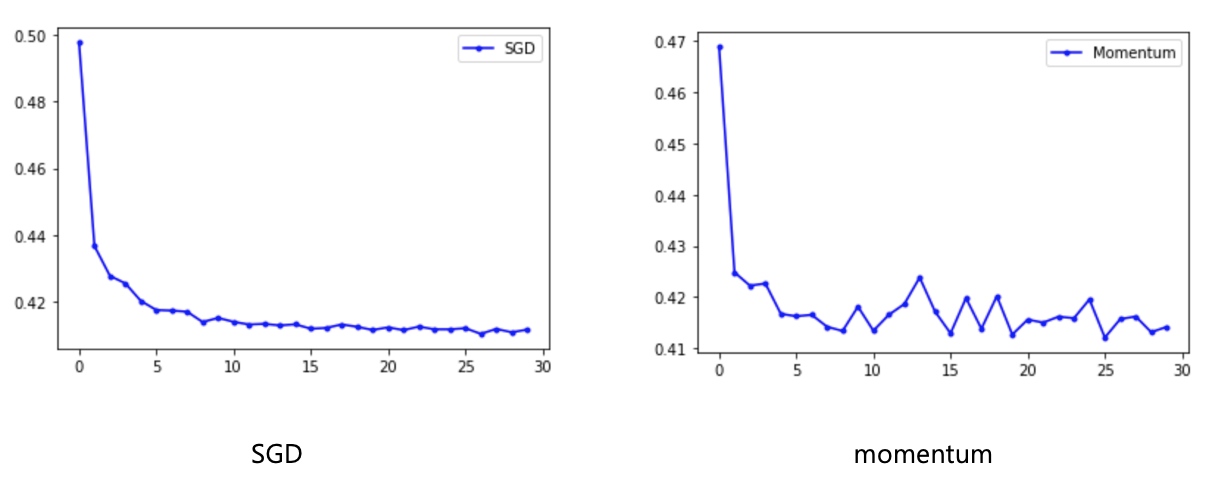
nesterov, adagrad
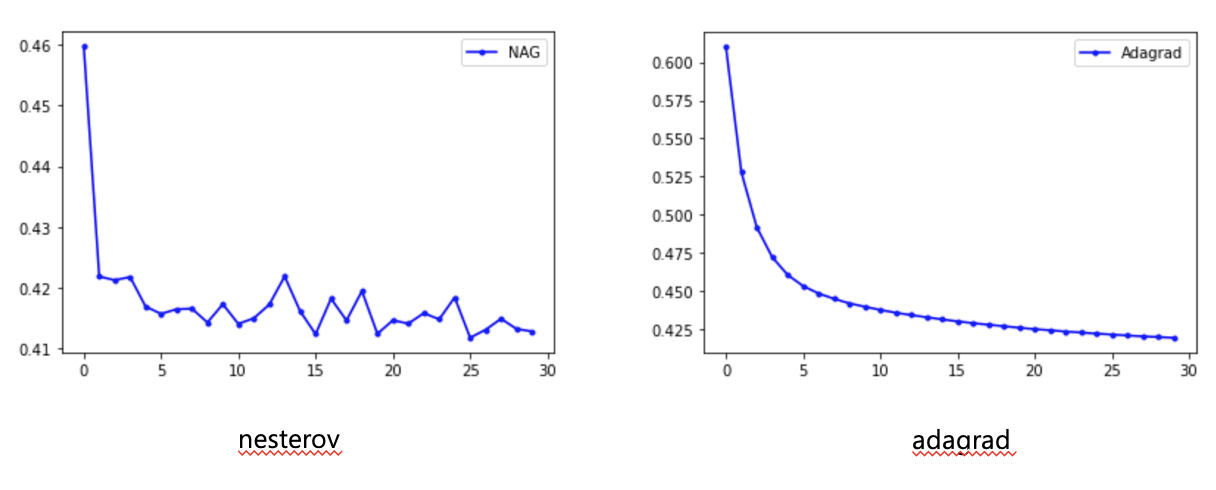
RMSprop, adam
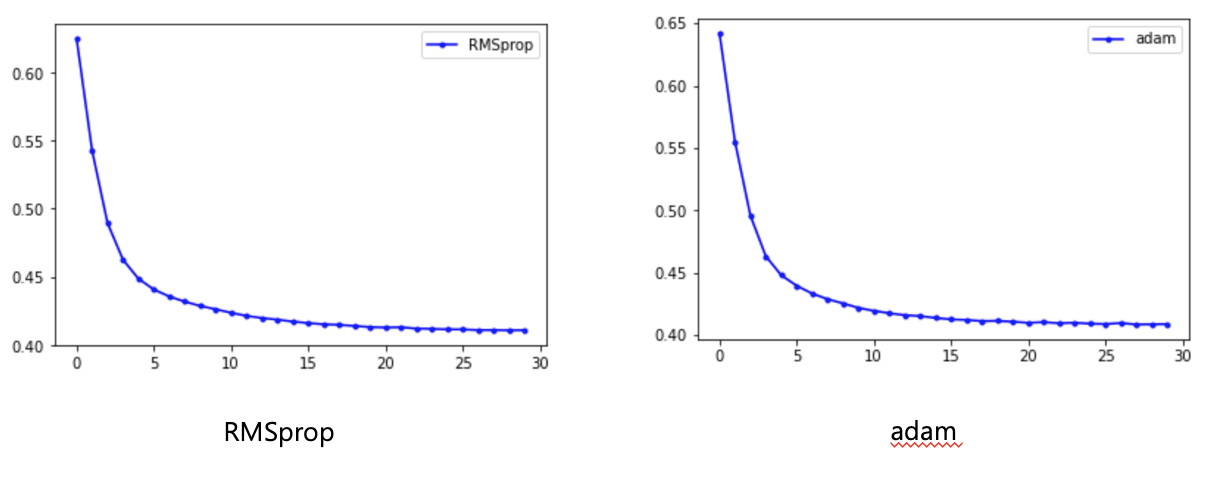
LOSS PLOT 전체 비교
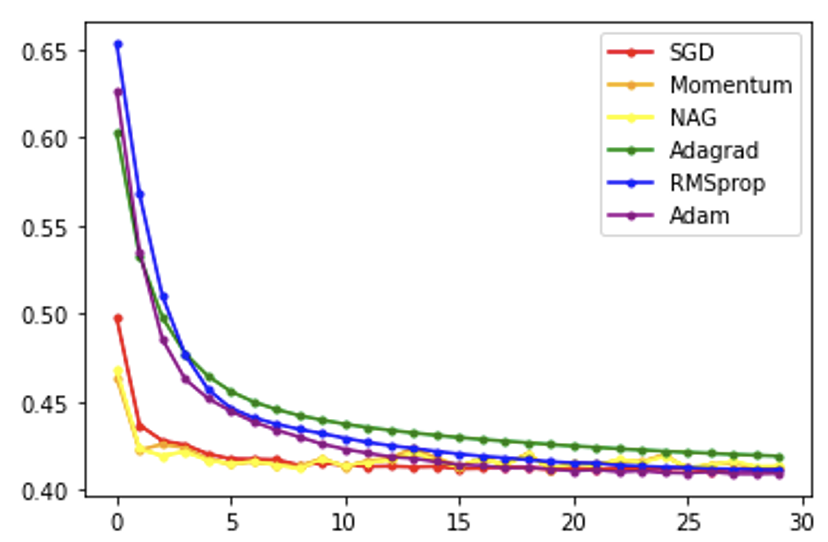
Batch size 별 성능 비교
Batch size 1, 10
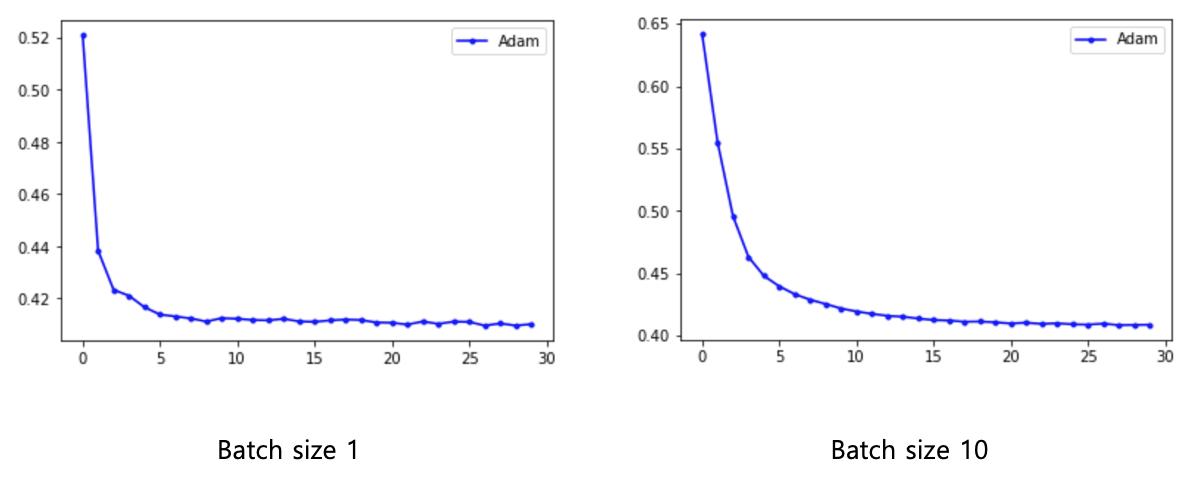
Batch size 30, 50
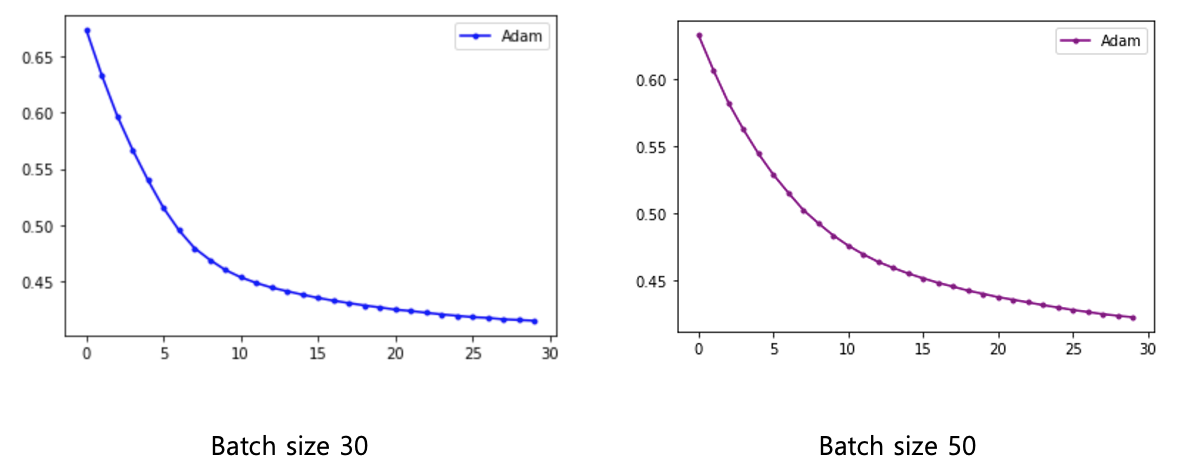
Batch size 80, 100
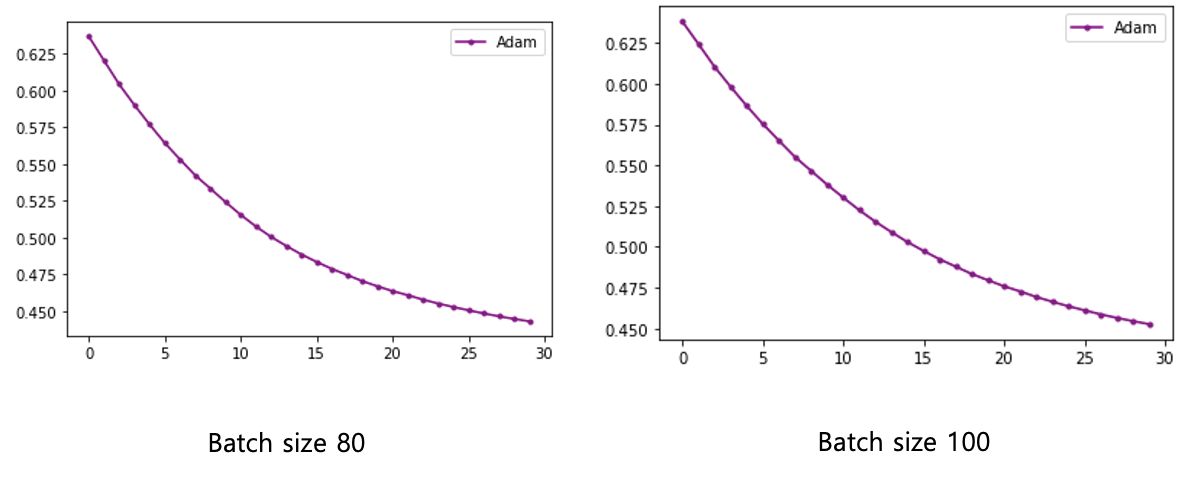
Batch size
